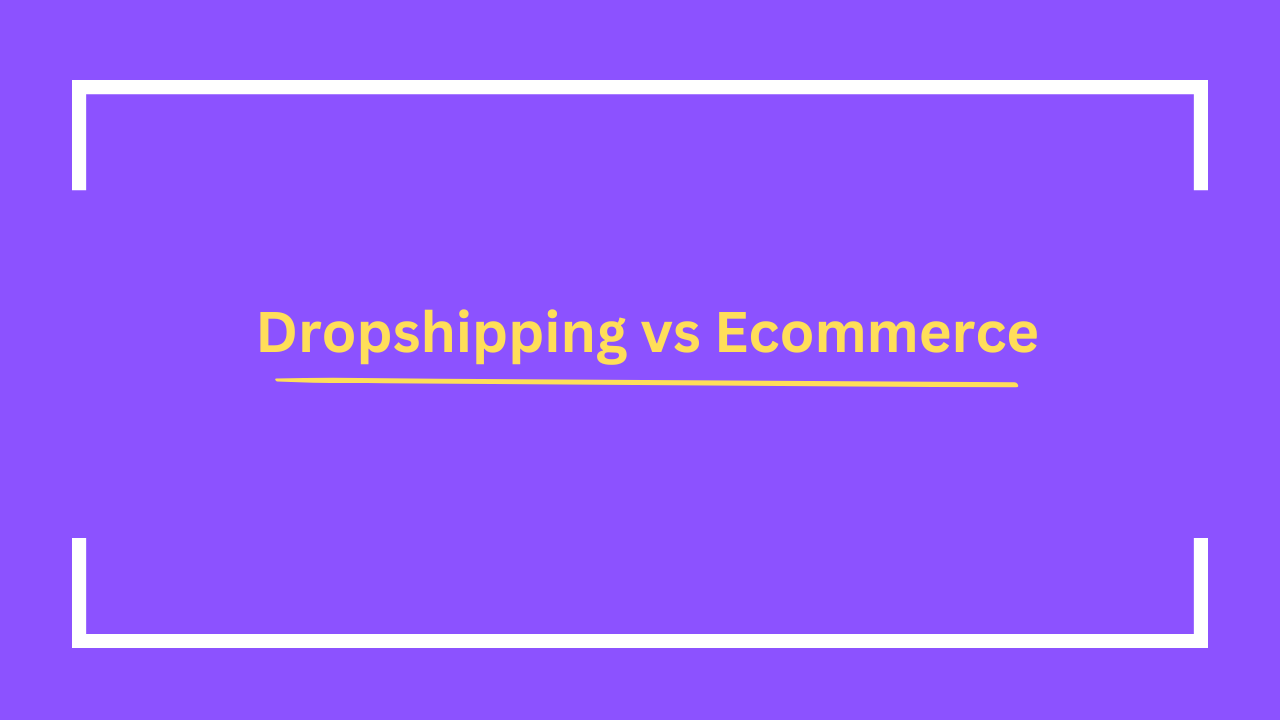Dropshipping vs Ecommerce
In the world of online retail, two popular business models often come up: dropshipping and ecommerce. But what exactly is the difference between the two? In this article, we’ll explore each model, discussing their key features, advantages, and disadvantages, helping you decide which one is right for you.
What Is Ecommerce?
Ecommerce, or electronic commerce, refers to the buying and selling of goods and services over the internet. This model encompasses a wide range of online transactions, including physical products, digital downloads, and services. Businesses operating in this space usually manage their inventory, order fulfillment, and customer service directly.
Key Features of Ecommerce:
- Inventory Management: Ecommerce businesses often maintain their own stock, which can require more upfront investment.
- Control Over Branding: You have complete control over your website design, branding, and customer experience.
- Diverse Revenue Streams: Ecommerce businesses can sell various products, including physical goods, digital products, and subscription services.
What Is Dropshipping?
Dropshipping is a specific type of ecommerce business model where the seller does not keep products in stock. Instead, when a customer places an order, the seller purchases the item from a third-party supplier, who then ships it directly to the customer. This means the seller never physically handles the product.
Key Features of Dropshipping:
- No Inventory Required: You don’t need to invest in or manage inventory, making it a low-cost entry into the ecommerce space.
- Less Risk: Since you don’t purchase products until you make a sale, there’s less financial risk involved.
- Scalability: Dropshipping businesses can easily scale without worrying about storage space or logistics.
Dropshipping vs Ecommerce: Key Differences
While dropshipping is a type of ecommerce, there are several differences between the two models that can influence your decision:
| Feature | Ecommerce | Dropshipping |
|---|---|---|
| Inventory Management | Requires holding inventory | No inventory; products are sourced after sale |
| Startup Costs | Higher due to inventory purchase | Lower; minimal upfront investment |
| Control | More control over branding and products | Less control over product quality and shipping speed |
| Fulfillment | Manages shipping and handling | Supplier handles shipping directly |
| Profit Margins | Potentially higher margins | Generally lower margins due to third-party involvement |
Pros and Cons of Ecommerce
Pros:
- Full control over inventory and branding.
- Higher profit margins due to direct sales.
- Ability to create a unique customer experience.
Cons:
- Higher initial investment required for inventory.
- More logistical challenges related to shipping and fulfillment.
- Risk of unsold inventory if products do not sell.
Pros and Cons of Dropshipping
Pros:
- Low startup costs and minimal financial risk.
- No need to manage inventory or shipping logistics.
- Easier to test new products without significant investment.
Cons:
- Lower profit margins due to supplier fees.
- Less control over product quality and shipping times.
- Increased competition, as many dropshippers may sell similar products.
Which Model Is Right for You?
Choosing between dropshipping and ecommerce largely depends on your business goals, budget, and how much control you want over your products. Here are a few considerations to help you decide:
- If you have limited capital and want to start quickly with less risk, dropshipping may be the best option for you.
- If you have a specific product line in mind and want more control over your branding and customer experience, traditional ecommerce could be the way to go.
FAQs
Can I do dropshipping on an ecommerce platform?
Yes, many ecommerce platforms, like Shopify and WooCommerce, support dropshipping. You can use apps and plugins to integrate dropshipping suppliers with your online store.
What are the risks associated with dropshipping?
Risks include lower quality control, reliance on suppliers for shipping and inventory, and potentially longer shipping times, which can impact customer satisfaction.
Can I switch from dropshipping to traditional ecommerce?
Yes, you can transition from dropshipping to traditional ecommerce by sourcing your own inventory as your business grows and you gain more capital.
Is it possible to combine both models?
Absolutely! Many businesses use a hybrid approach, offering both dropshipping products and holding inventory for others to maximize their sales opportunities.

